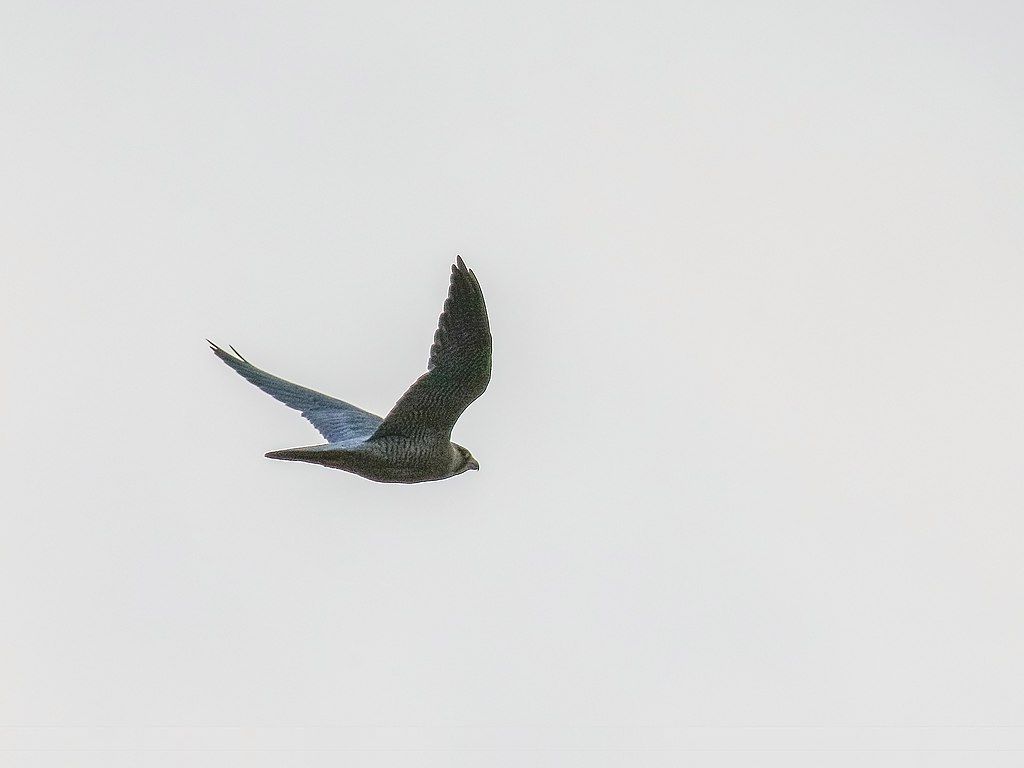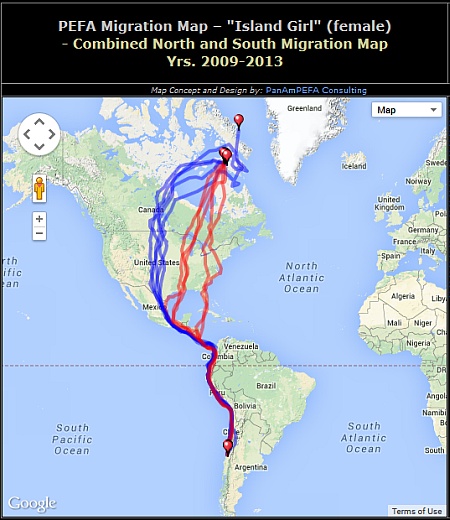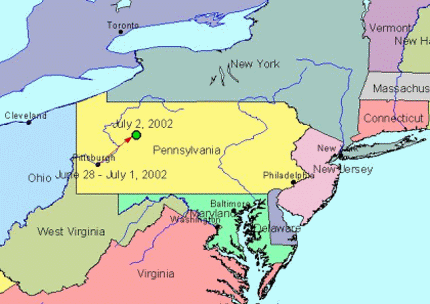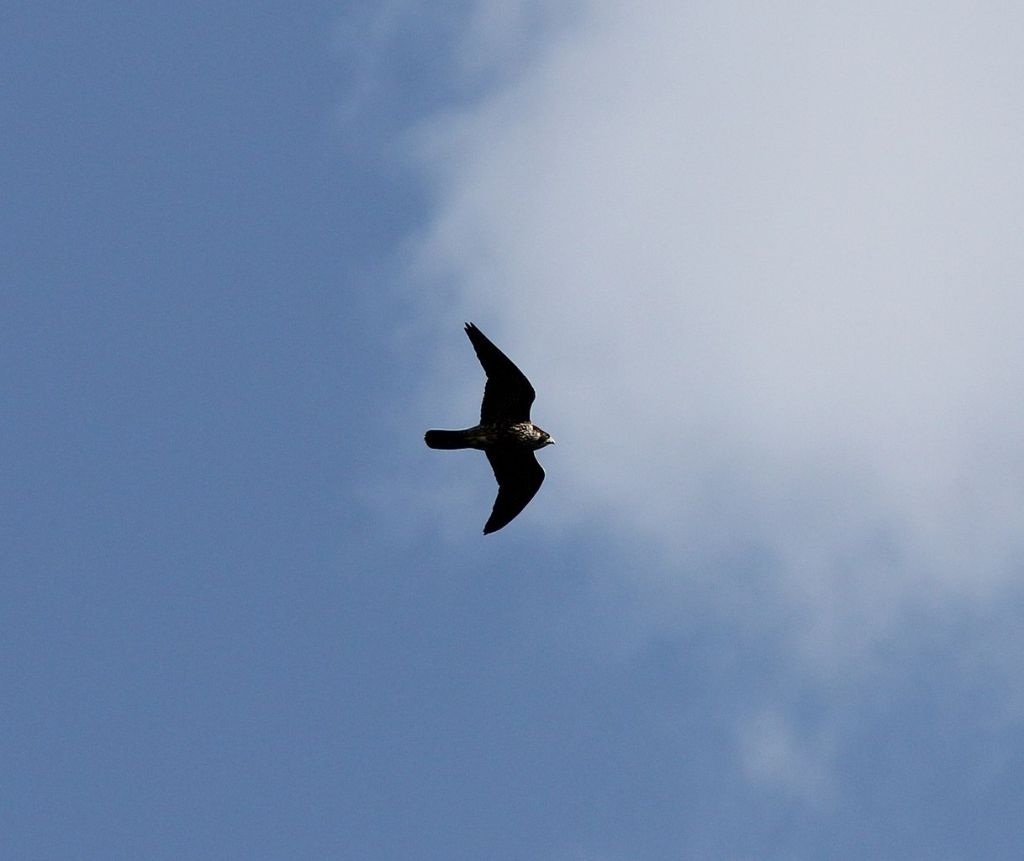
7 September 2021
As fall migration continues, raptors swell the southbound stream. At the Allegheny Front Hawk Watch (closest to Pittsburgh), broad-winged hawks peak in September, sharp-shinned hawks in October, red-tails in late October, and golden eagles in November. Peregrines are rarely seen, averaging just 34 individuals per season. Their numbers peak in the first week of October.
Peregrines are rare at the Allegheny Front Hawk Watch because they are not numerous to begin with and the watch is far from their typical migration routes. However, many peregrines are never counted on migration because they don’t migrate at all. It depends on where they breed.
Arctic peregrines are truly migratory. Their food sources — nesting shorebirds, seabirds, and songbirds — leave the arctic from July through September so the peregrines must leave, too. A decade ago The Southern Cross Peregrine Project (SCPP) satellite tracked a dozen arctic peregrines wintering in Chile and found that those that breed in northeastern Canada always leave around the September equinox.
From there, unless major weather diverts them, northeastern arctic peregrines typically fly due south to join the Atlantic Flyway. In the spring they track west and follow the Central Flyway. The map below shows five years of satellite tracking of an arctic peregrine, “Island Girl,” on her migration south from Canada to Chile (red) and returning in the spring (blue).

Meanwhile adult peregrines in eastern North America generally don’t migrate at all. Urban peregrines remain on territory year round because their food supply is constant (pigeons) and actually increases in the fall when migratory songbirds arrive for the winter. Adult peregrines may move a short distance during winter scarcity but not necessarily south. Juveniles definitely wander.
The animated PA Game Commission map below shows nine months of wandering by a juvenile peregrine that hatched at the Gulf Tower in Spring 2002. The bird left Pittsburgh on 1 July and wandered to New Jersey, the Chesapeake, Virginia, Maryland and Pennsylvania. This was only the beginning.

Juvenile peregrines wander until they reach maturity at age two, then wander to find a breeding territory. Good nesting “cliffs” are scarce so these floaters may wander for years. When they finally claim a nesting site they won’t leave home unless an even better site becomes available.

Do Pittsburgh’s peregrines migrate? No. I see them in person and on the National Aviary nestcam from November through February when migratory peregrines are in South America.
Pittsburgh’s peregrines stay close to home.
Read more about Canada-to-Chile migratory peregrines in these vintage articles: Going The Distance and Follow an Arctic Peregrine on Migration.
(photos from Wikimedia Commons; click on the captions to see the originals. Telemetry map of juvenile peregrine falcon banded at the Gulf Tower in Spring 2002 (animation from PA Game Commission, 2003). This animation is no longer available on the PGC website)